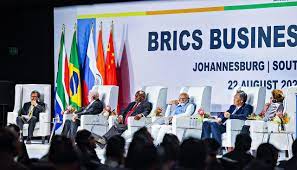
BRICS Plus: Share payments using own system instead of SWIFT grows
By Rhod Mackenzie
According to Maxim Osadchiy, the head of the analytical department of BKF Bank, countries worldwide are actively developing alternatives to the SWIFT interbank system for making payments. However, these alternatives still only account for a small share of traffic, representing up to 10% of transactions.
The use of disconnection from SWIFT as a tool for imposing sanctions has resulted in the formation of alternative international systems for transmitting financial information and making payments by several states. This has led to attempts to integrate these systems.
When asked about the percentage of payments that come from such alternative channels, Osadchiy replied that it is difficult to estimate accurately, but it is likely to be between 1% and 10%.
In Russia, the SPFS (Bank of Russia Financial Message Transmission System) is actively functioning. Similarly, China has its own system called CIPS, and Iran has SEPAM. India also has its own analogue of SWIFT, known as SFMS.
It is worth noting that while SWIFT connects over 11.5 thousand financial institutions, the most developed alternative, the Chinese CIPS, has only 139 direct and 1345 indirect participants. The Russian SPFS has 550 participants, including 150 non-residents. The expert estimated that approximately half a million financial messages pass through SPFS per day, while about 44 million pass through SWIFT.
Meanwhile, Russia is actively expanding its national system. According to Mohsen Karimi, deputy head of the Central Bank of Iran for international affairs, the financial messaging systems of Russia and Iran are now fully connected, allowing their banks to carry out transactions directly.
